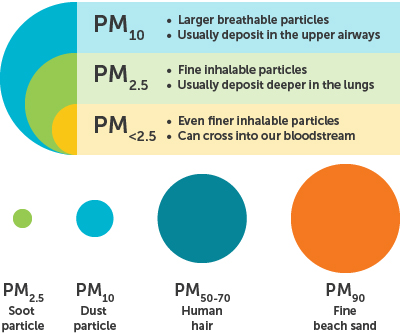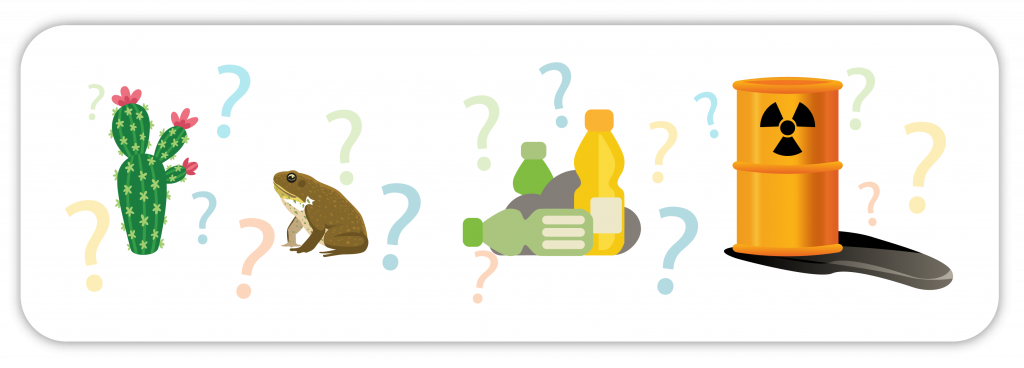Air
The air we breathe provides oxygen that powers every cell and function in the human body; ensuring good air quality is critical to our health today and in future.
Clean air provides free health insurance for everyone
Clear, clean air not only looks and smells good, but it is also good…for everyone including unborn babies. We now know that poor air quality raises the risk of developing lung and heart diseases, dying early and contracting some cancers. Children, the elderly, people with underlying health conditions and those living close to sources of air pollution are the most at risk. Clean air gives infants a higher chance of being born a healthy weight, staying healthy and developing normally. Studies as recent as 2016 indicate that air pollution in Australia claims more than 3,000 lives each year with related mortality costing the public approximately $16 billion each year.
Lives and money are not the only cost of poor air quality. Air pollution causes damage to our buildings, cars and other infrastructure, impacts the health of plants, animals, waterways and oceans, and contributes to higher temperatures. This is because many of the air pollutants that damage human health also damage other living things, built environments and trap heat in the air.

Air quality is measured by the quantity and size of particulate matter in the air. The particle size of particulate matter is measured in micrometers (one millionth of a meter!). Particles that are smaller than 2.5 micrometers can cross into our bloodstream and cause problems elsewhere in our body.
Diagram adapted from US EPA
Put another way, maintaining good air quality helps:
- maintain good lung and heart health in young and old alike
- reduce the demands on our public health and home care systems
- keep our local (and cumulatively global) temperatures cooler
- keep our buildings and natural areas in better condition for longer
- reduce the demands on our tax dollars
DID YOU KNOW? There may be no safe level of air pollution. This is because long-term cumulative and short-term acute exposure both cause health effects.
Source
Maintaining good air quality requires that we all do what we can to lower emissions and increase the health and extent of our land and marine ecosystems.
To breathe easy, we need to break a complex cycle
Climate change, air quality and human health are intimately linked in a cycle that presents a confronting challenge to the entire human population. Declines in air quality increase our risk of illness and increase local ambient temperatures. Temperature increases along with declined air quality contribute to changes in local as well as global weather patterns. This in turn requires more power generation for cooling and healthcare, which impacts air quality.
This cycle combined with declines in the extent and health of land-based and marine ecosystems (both locally and around the world) means our planet’s ability to maintain good air quality is slowly declining.
Below provides a snapshot of the most common sources of pollution and/or particulate matter affecting air quality in the central Queensland region:
- Emissions from fossil-fuel power generation and use (including exhaust from motor vehicles)
- Smoke and gases from all types of fires
- Dust and particulate matter from cleared land and disturbed soils
- Pollen from flowering plants
- Salts from soil and coastal areas
- Loss of vegetation and in turn the screening and filtering services it provides
- Prevailing weather conditions including high winds, extended dry periods, big storm events and high temperatures (which all influence 1, 2, 3, 4 and 5 above)
DID YOU KNOW? In Australia, air pollution from power generation, vehicle and industrial emissions causes more deaths per day than the national road toll.
Source
Discover the biggest threats to our natural assets
 Our air is okay, but is it good for our kids?
Our air is okay, but is it good for our kids?
By world standards Australia’s and central Queensland’s air quality is relatively good, however, we cannot afford to be complacent. Events in recent years have resulted in periods of poor air quality in our region. Smoke from the 2019 bushfires around Rockhampton and the Capricorn Coast is just one instance. 2018 data from the National Pollutant Inventory (which provides publicly available information on substance emissions in Australia) shows central Queensland is home to at least 13 postcodes with high levels of air pollution. We are also home to one of the oldest (and subsequently more inefficient and less clean) power stations in Australia. As we get more hot days, higher temperatures, longer dry spells, and bigger and more frequent storm and fire events, our air quality and our health is at risk. These risks will only increase as we house and transport more people, and produce more goods and services in our region.
DID YOU KNOW? As recent as 2017, out of 35 OECD countries, Australia ranked lowest in fuel quality. In urban areas, vehicle emissions contribute up to 80% of nitrogen dioxide emissions. Reducing them would help improve our air quality and reduce childhood asthma rates.
Source
In 2020, we asked our community how they thought the health of climate and air in their local government area were trending based on the preceding five years. The majority of respondents considered them stable, while more people considered them to be declining than improving.

![]()
Time to think and talk about this! Most things are okay but current trends are borderline and could easily head downhill.
Asset status is a ready estimator based on:
- Global, Australian and Queensland reports
- The likely impact on our businesses, communities, economy and future if we change nothing in the next five years
- Results of the 2020 regional natural assets community survey
Our region is not at a point where available data can be collated and analysed using a scientifically validated model to produce an accurate report on the status of our region’s six region’s natural assets and two key drivers.



